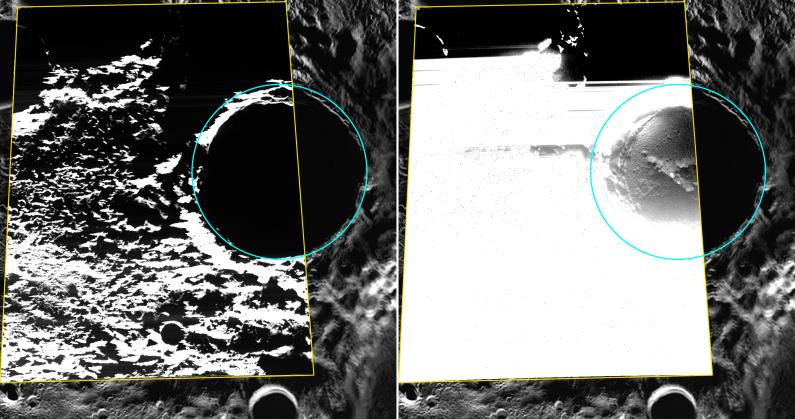MESSENGER discovered water ice on Mercury

When it comes to Mercury, the majority presents it as a red-hot small planet, on the surface of which you can see lakes of molten metal. Probably, science fiction writers contributed to this idea, more than once describing Mercury as a scorched daughter firebrand, where there is almost nothing, and what is there is melting or burning.
Actually, all of the above applies only to the side that faces the Sun, on the "night" side the temperature drops to a negative value of minus 180 degrees Celsius.
Low temperatures are also characteristic of craters where the sun never looks. It was the craters that they decided to study using the cameras of the Messenger probe, which has been helping to study Mercury for several years.
So, starting in 2012, scientists received photographs of shaded craters in the polar regions of the first planet of the solar system. Some information about what is located at the bottom of the craters was obtained thanks to the scattered radiation inside the crater itself.

It was best to examine the Prokofiev crater (yes, it was in honor of the composer Prokofiev that this crater got its name). Studying the images using a special algorithm showed that at the bottom there is a material with a high albedo characteristic of water ice. It turned out that in other craters of Mercury there is ice, but there it is covered with a coating, presumably of material with a large amount of organic matter.
Now scientists need to find out how old the ice deposits are - whether water appeared on Mercury billions of years ago, or more recently, by geological time.

It is also interesting that the results suggesting the presence of ice on Mercury were obtained back in the 90s of the last century. Then the surface of the planet was examined using a 70-meter antenna of the Goldstone radio telescope. In the polar regions of the planet, radio waves reflected much better than in other places. Now the guess of scientists has been confirmed.
Well, and as a bonus - a stereoscopic image of Lermontov Crater.

Via + NASA
